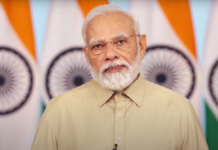Indian authorities have chosen to repeal the Indian Nursing Council Act, 1947 by another bill. The department concerned almost finalized the bill. The new bill will be known as the ‘National Nursing and Midwifery Commission Act, 2020’. An outline of the general public and stakeholders has been released with their views and suggestions. They can mail it to nnmcbill-mohfw@nic.in by no later than 6 December. The public release was signed by Dr. Rathi Balachandran, ADG Nursing.

The proposed bill has the following aims and objectives:-
- Maintenance of Central and State registers
- Assessment of institutions
- Adoption of latest scientific advancements
- Creating a system where research and development of these scientific advancements can be accessed easily
- Regulation and maintenance of standard of education in the concerned field
- Regulation and maintenance of services rendered by Nursing and Midwifery professionals.
Chapter I of the Bill sets out the principles relating to this Act.
In terms of section 2 (c), Clinical Nursing refers to the services of nurses in hospitals, clinics, or ambulances. Section 2 (k) defines ‘Midwifery Practices’ as the scope and list of roles, responsibilities, duties, and duties that may be provided by a registered midwife.
Under section 20, the Board is established as a Nursing and Maternity Assessment Board and a Measurement Board. ‘Nursing Practices’ are defined as the scope and scope of the role, responsibility, duty, and functions of a registered nurse.
Chapter-II explains the constitution of the Commission.
In terms of the bill, the commission will hold powers as provided:
- It will be a corporate body
- It will follow an endless sequence
- It will hold the standard mark
- It has the power to acquire, seize and dispose of property.
New Delhi is the selected as a place for its head office.
The composition of the commission, as such, may change,
- Chairperson appointed by the Central Government
- Additional GoI Secretary in the Department of Health and Family Welfare
- GoI Nurse Advisor
- Another Representative of Defense Dept.
- One Representative of the Directorate General of Health Services
- A representative of one of the Indian Medical Research
- One Representative of the National Medical Commission
- Five people are represented at the top institutions
- Five people from nursing colleges are nurses
- One person from all six constituencies representing the State Commission
- Twelve prominent nurse members, two from each of the state-designated governments
- Eight members of at least one nurse and midwife in each area are appointed by the Central Government
- One person representing a relief center designated by the Central Government
In terms of section 6, the term of the Chairperson, the Secretary, and the members under subsections (k), (l), (m), and (n) section 4 for a period not exceeding 4 years and are not eligible for extension or re-election.
Chapter-III describes the Independent Board.
In terms of section 11, the following independent boards will be established by the Central Government under the auspices of the Commission: –
- Board of Nursing and Under Graduate Education
- Board of Nursing and Post Graduate Education
- Nursing and midwifery rating and Measurement Board, also
- Nursing and Midwifery Ethics Board and Registration Board
Each Independent Board will have a President as its member. The other constituents are two full time members. and the third is four part time members
The first two will be holding office for 4 years and the third one for 2 years maximum.
The powers and roles to be played by these independent boards are set out in more detail in this chapter.
Chapter-IV discusses Government Nursing and Midwifery Commissions
In terms of section 24 of the Act, all countries must have a Nursing and Midwifery Commission within one year of the commencement of this Act. It will be the responsibility of the State Commission to make appropriate arrangements to ensure the integration and development of education and service delivery standards. The Ethics and Midwifery Ethics and Registration Board will deal with complaints and grievances related to misconduct by registrants and nurses working in the Province. The person affected will be given appropriate opportunities to defend themselves before taking action.
Chapter-V deals with registration.
The Nursing and Midwifery Ethics and Registration Board will keep on the web and live the Central Register which will contain all the tricks of the people living on the boards. The Central Register is public records and can be accessed by anyone. Any person registered in the Nursing Register under the previous Act will automatically register in the Central Register maintained in terms of the current Act.
Chapter VI tells us about the National Examination.
According to section 26, there will be an Entrance Test for admission in UG Nursing Education. This test will apply to all the institutions under the Nursing and Midwifery. It will be conducted in English and other languages as per regulations. The Commission is solely responsible for the regulations and conduct of counseling. The registration of nurses will be done through a National Exit Test. It will be the final year exam for UG Nursing and Midwifery. It will be the basis for admission in Post graduate courses. In this also the Commission will formulate guidelines for counseling.
Chapter VII – Recognition of Nursing and Midwifery Qualifications
Section 30 states that qualification granted by university or institution in India under Nursing and Midwifery UG and PG will be recognized. The respective boards will examine the applications and later recognize them as qualifications within 3 months. The board will also maintain the list and specify the date of recognition. All the previous qualifications under the previous Act will be carried forward and listed on the boards under the new act. The Commission also holds the power to withdraw and derecognize the qualification if it does not conform to the stated guidelines.
Chapter VIII Recognises The Nursing and Midwifery Advisory Council
An advisory body is also to be constituted. It will be known as the Nursing and Midwifery Advisory Council. The composition of the council is as follows:
- Chairperson of the commission
- Chairman of UGC
- Every member of the Commission
- Director of National Assessment and Accreditation Council
- One member from each state which will be nominated by the state government or Ministry of Home Affairs
- One member from every state nominated by State Commission
The council will provide a platform to put views and concerns. It will help in policy formation regarding nursing education, training, service, and research.
Chapter IX is related to Grants, Audit, and Accounts
The central government will provide Grants of appropriate amounts to the smooth function of the Commission. The Commission is asked to maintain proper records of accounts. It has to prepare an annual statement in the prescribed form and get it audited. The reports are need to be submitted to the central government in prescribed format and time. And the central government will place the reports before each of the Houses of the Parliament.
Chapter X – Miscellaneous
Central Government will bound the Powers and functions of the Commission, the Autonomous Boards, and the Advisory Council. The central government’s decision will be final despite the policies. Every university and Nursing and Midwifery institution has to maintain an online website to display information as asked by the Commission or Autonomous boards.
Section 55 claims that as an effect from such date after the notification of the central government, the Indian Nursing Council Act, 1947 will stand repealed and later dissolved. The Commission is the successor of the Indian Nursing Council and its subsidiaries and owned trusts.
The complete document can be accessed here.











